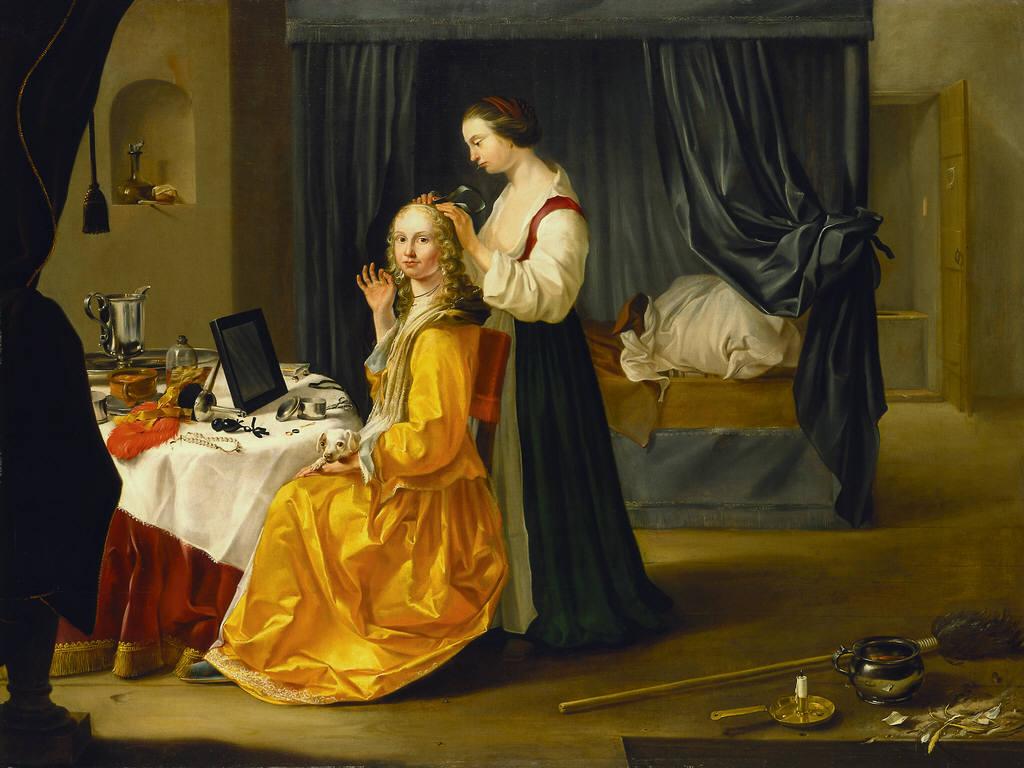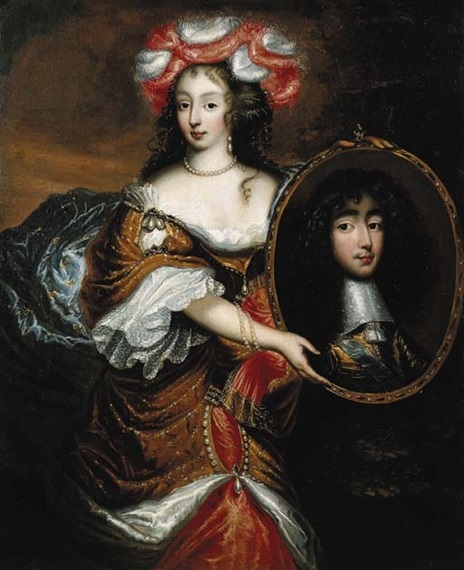17th century beauty hacks
Beauty hacks and tricks to enhance body features are nothing new. The ladies in the 17th century had quite a few of them, some dating back to ancient times, on how to lose weight, make the teeth whiter, the skin smoother or how to get rid of lice.

In matters of weight loss, the 1694 Ladies’ Dictionary advises some easy exercise, so that the blood flows and the skin sits more loose, as well as a bath in claret wine to which wormwood, calamint, chamomile, sage and squinath should be added… but careful not to overdo it and get fully rid of those fashionable curves. If only specific parts of the body should lose a bit of fullness, the same manual advises to brew a mixture in an earthenware pot consisting of oil of foxes, oil of lillies, capon-grease, goose-grease, pine and rosin, pitch and turpentine. It should then be mixed with hot wax and afterwards cooled to be applied to places that ‘languished or do not equally thrive’. The fitting diet to go with it is to avoid food that is very salty, sharp, hot or bitter and to rather eat sweet and nourishing food such as capon, mutton or new eggs.
To whiten the skin, various recipes were known and they mostly involved mercury, a highly toxic substance. One of them was Venetian Ceruse aka Spirits of Saturn. It dates back to the 16th century and was used as a skin whitener, containing white lead which could lead to an early death due to lead poisoning. A non-toxic skin whitener was egg-white mixed chalk and vinegar. ‘Wash in your own urine, or with rosewater mixed with wine, else make a decoction of the rinds of lemon.’ was advised by Nicolas Lémery in order to clear the complexion of the skin.
Belladonna aka deadly nightshade was used in form of eye-drops to achieve a doe-eyed look and dilate the pupils. If used over a long time, it could lead to blindness. To brighten the hair a mixture of urine, rhubarb, lye, saffron, cumin seed, celandine and oil apparently does the trick.
A beauty manual from 1608, with the rather long title Delights for Ladies to Adorn Their Persons, Tables, Closets, and Distillatories: With Beauties, Banquets, Perfumes and Waters, suggests to mix cow milk, or if available breast milk, with water and to wash the skin with it every night for a clear complexion. To get rid of blemishes, mixing salt with lemon juice and applying it to the problematic spots works wonders apparently. (Do not try it. It will hurt a lot if the skin is open and probably do more harm than good.)
Do you have freckles and don’t like them? The same manual says in order to get rid of them you have to distille water with elder leaves in May and apply it to the freckles at the wane of the moon.
‘Take four handfuls of pennyroyal, sage, and rosemary, three handfuls of angelica, and four ounces of juniper berries. Boil these ingredients in a sufficient quantity of water, and drain off the liquor for use.’ is advised to get rid of smelly feet and “Take oil of costus and myrtle, of each an ounce and a half. Mix them well in a leaden mortar, adding liquid pitch, clarified juice of walnut leaves and laudanum, of each half an ounce; gall nuts, black-lead, and frankincense, of each a dram, and a sufficient quantity of mucilage of gum Arabic made with a decoction of gall nuts.” to dye the hair or beard black. While the first one might actually work, the second will most likely end up with lead poisoning again. Do not try.
The Accomplish’d Ladies Delight of 1684 advises “First pluck away the hairs of the armholes and wash them with white wine and rosewater, wherein you have boiled cassia ligna, and use it 3 or 4 times.” to get rid of armpit odour.
Thomas Lupton’s A Thousand Notable Things of 1579 advises if one suffers from dry or rough lips, one should rub them with the sweat from behind ones ears. To get rid of warts, the same manual advises to put the juice of elder berries on them.
The distilled water of Capers will make your hair green, says Johann Jacob Wecker in his 1661 Eighteen books of the secrets of art and nature.
For white teeth, burn the stems of rosemary and mix the ash with the rosemary leaves, then put everything into a linen handkerchief and rub it over your teeth. For softer hands, take chestnuts and peel and crumble them into dust. Afterwards mix it with water and apply.
I wonder if the last one for softer hands might actually work. It apparently comes straight from the court of Versailles. If you try it, let me know…. and for more on 17th century beauty have a look here: 17th century beauty standards and 17th century hygiene.





One Comment
P^2
I love all of these posts containing the finer details about what went on in daily life during the 17th century. It’s both fun and interesting to see how they addressed life’s little annoyances like gray hairs, stinky feet and pimples. I can totally envision some of our friends from Louis’s court at Versailles employing these, especially those that were known to be vain (which probably included most of the court). Not much has changed in 300+ years, except the formulation of the treatments.
Thanks for sharing!